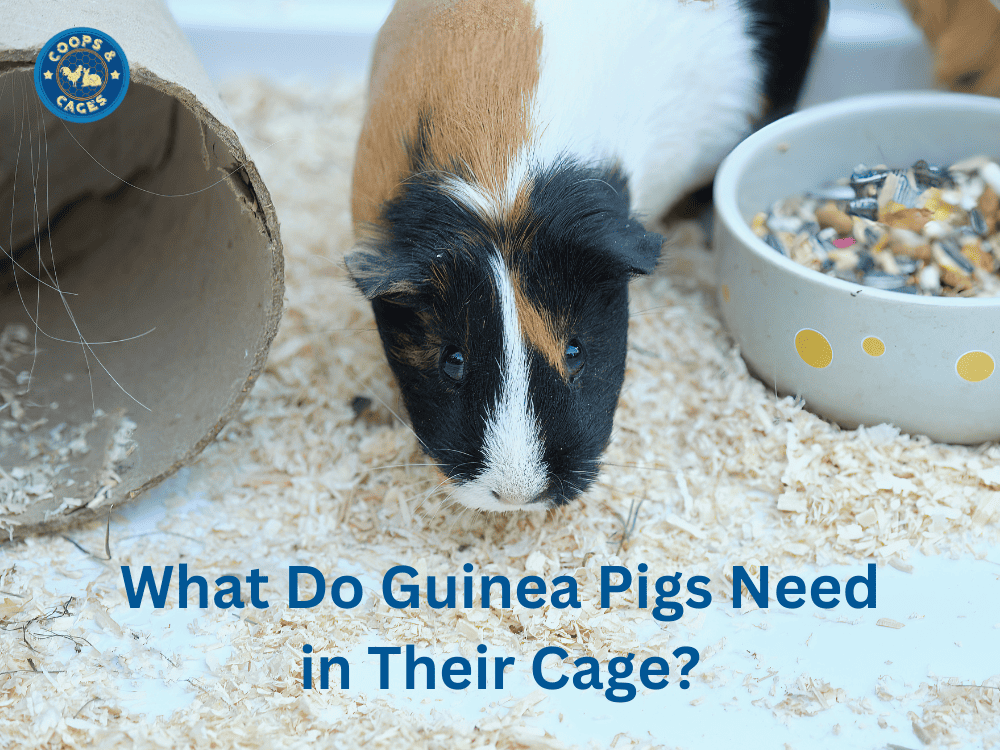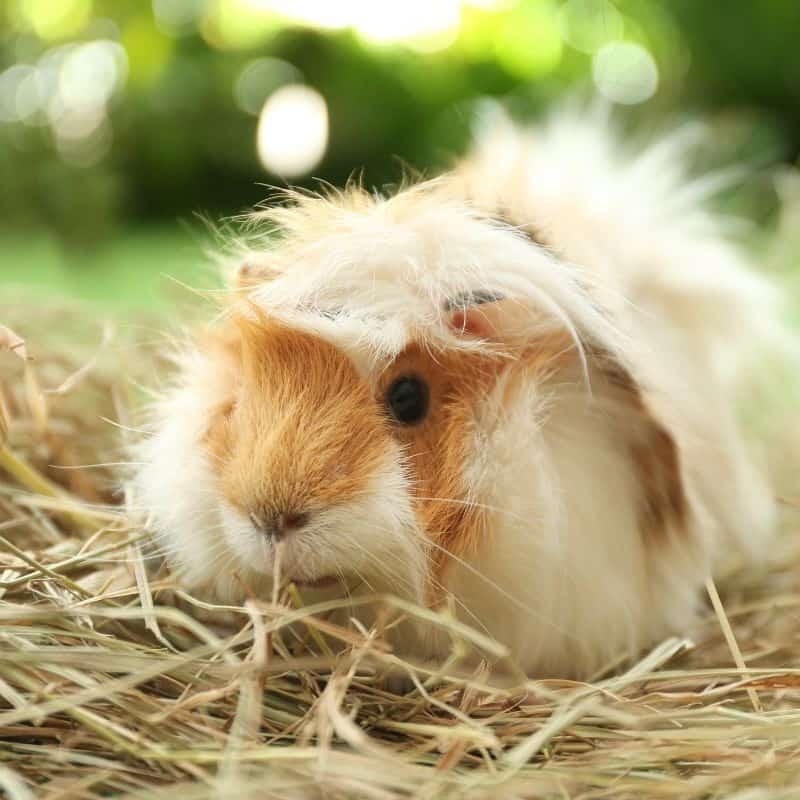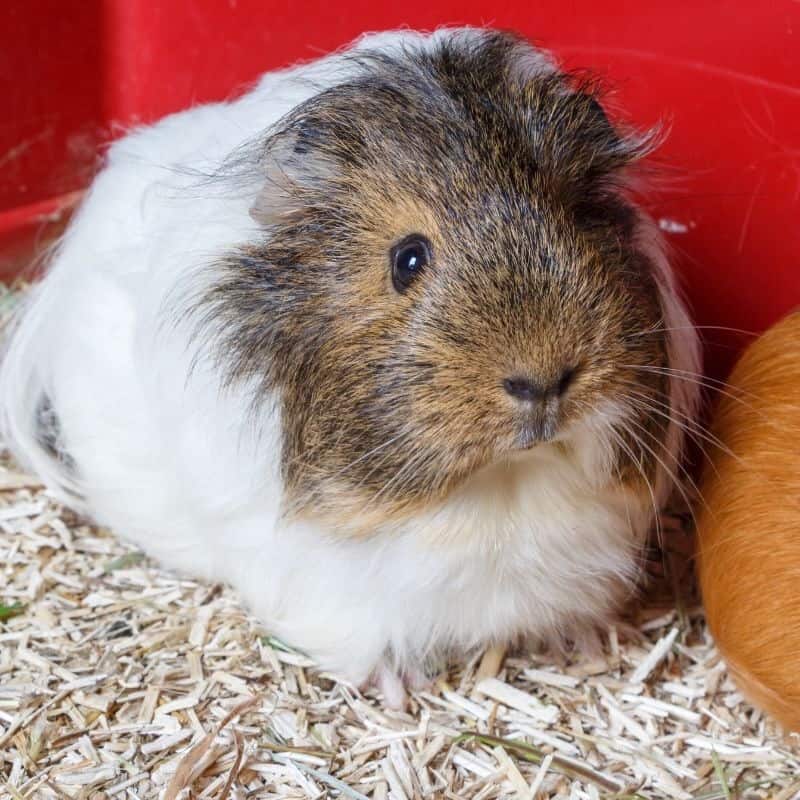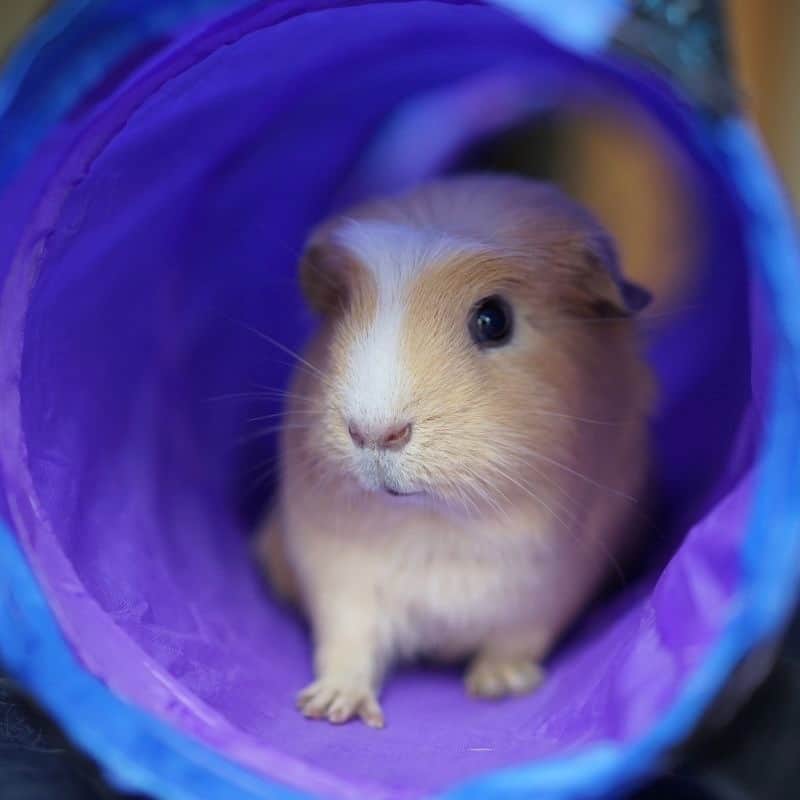Guinea Pigs
Essential Guide: What Do Guinea Pigs Need in Their Cage?
We’ve all got questions about our furry friends – especially when it comes to creating their perfect home. So, let’s tackle one big question today: what do guinea pigs need in their cage?
We’ll delve into the essentials like water bottles and hay for feeding, comfy bedding for restful sleep, hideouts to keep your pet safe, and toys galore to keep them entertained.
Whether you’re a seasoned guinea pig parent or just starting out with your first little furball – stick around!
Let’s explore how we can make our squeaky pals’ homes cosy and answer the question together, “What do guinea pigs need in their cage?”
Water Bottles
All living beings need water to survive, and our cavy friends aren’t an exception! Provide your guinea pigs with constant access to clean and fresh drinking water.
Maintaining Hydration Levels
Check their water bottle multiple times each day to ensure your guinea pigs never run out of water. If you have a large hutch, consider having multiple water bottles.
Use a clear water bottle so you can easily monitor the amount your guinea pig drinks.
If your guinea pig is suddenly drinking a lot more or a lot less each day, it could be a sign it is unwell and you need to book a visit with your vet.
Bottles Vs. Water Bowls
Small animal water bottles, also known as sipper bottles, can be purchased in most pet stores.
They have a nozzle on the end with a stainless steel ball tip end. Your guinea pig will lick the tip to get small mouthfuls of water. These bottles can easily be mounted onto the wire on the side of your hutch.
This sipper design minimises spills and mess. If you put your guinea pigs water in a bowl or dish, they will likely get food, bedding and poo in the water. This is unhygienic and difficult to keep clean.
Hay
For our furry mates, hay isn’t just a food source; it’s essential to their dental health. This is because guinea pigs need to constantly chew on something tough like hay to keep their teeth from overgrowing.
The dietary importance of hay cannot be overstated. It should make up about 70% of your pet’s diet, making it their primary source of nutrition and a huge factor in your guinea pig’s health.
Type of Hay
Feed your guinea pig an unlimited supply of Timothy, Oaten or Meadow hay. These types provide the right balance of fibre and other nutrients necessary for optimal digestion and oral care. Try mixing two of these varieties to add more diversity to your little friend’s diet.
Availability of Hay
It is a good idea to provide guinea pigs with constant access to clean hay. Putting the hay in a rack helps stop hay from getting soiled and minimises the amount of hay thrown on the floor.
Finding Quality Hay
Avoid buying hay from pet shops as it can be extremely expensive. A small bag that will only last you a few days can cost over $20!
Instead, buy a compressed bale of hay from a rural supply store and store it in a 100L plastic tub. This bale will cost around $25 and will last you over 6 months, offering excellent value for money.
Pellets
Guinea pigs enjoy pellets. While hay should make up the majority of their food intake, pellets supplement their diet with vital nutrients including Vitamin C. The significance of Vitamin C can’t be overstated as guinea pigs, just like humans, cannot produce it on their own.
This makes them reliant on external sources for this critical vitamin. Lack of adequate Vitamin C can lead to scurvy – a disease characterised by weakness, swollen joints and loss of appetite.
Choosing High-Quality Pellets
Selecting high-quality pellets is key because not all brands provide the same level of nutritional content. Good quality pellets contain a balance between fibre, protein and fat content which mimics what they’d get from fresh foods in nature.
Avoid those containing seeds or dried fruits as these may cause choking hazards or digestive issues due to sugar levels. Always look for plain ones where the main ingredient is grass or hay.
Serving Size Matters
Measuring serving sizes ensures your pet isn’t overfed while still receiving necessary nutrients on a daily basis.
A general guideline is about one-eighth cup of pellets per day for a guinea pig, though this may vary depending on its age, size and health. You can also treat your guinea pig to fresh vegetables. Guinea pigs love capsicum, cucumber and corn!
Jordan’s Tip:
Guinea pig pellets, packed with essential nutrients like Vitamin C, are a great addition to your pet’s diet. Choose high-quality ones with lots of fibre and avoid those laden with seeds or dried fruits. The right serving size—roughly an eighth of a cup daily—keeps them nourished without overfeeding.
Bedding
Line the house section of your guinea pig hutch with absorbent bedding. This not only provides a comfortable place to sit but also absorbs urine and faeces, helping to minimise mess and odours.
Types of Bedding
Paper bedding, hay bedding, and pine shavings are good options because they are cheap and disposable. Ensure wood shavings are dust-free to prevent health issues.
You will need to spot clean daily then fully replace all bedding about once per week. Fleece bedding is lovely and soft on sensitive guinea pig feet but needs to be changed and washed daily.
Hideouts
Guinea pigs are prey animals and naturally run to hide if they are frightened. They have sensitive hearing and can be startled by anything from young children to loud noises. Include multiple hideouts within your guinea pigs’ cage.
The Importance of Hideouts
Having access to hideaways allows your guinea pig to engage in natural behaviours that keep stress levels low, encourage rest and promote good health.
Just like us humans who value our private time and space at home, so do our furry friends! Give your guinea pigs plenty of places to hide.
Enrichment
Fill your guinea pig’s play area with enrichment items. They are not just for fun; they are essential items for your guinea pig’s physical and mental health.
Boredom can lead to stress in guinea pigs, but with a variety of toys, you can keep them mentally stimulated.
Toys
Guinea pig toys are usually basic treat-dispensing toys that reward them with food for problem-solving skills.
Avoid plastic toys as these aren’t safe if ingested by your furry friend. Instead, opt for wooden or natural fibre materials which provide the added benefit of being good for tooth grinding when gnawed upon.
Tunnels
Tunnels serve two purposes: they stimulate curiosity through exploration and act as hideaways providing safety when needed.
Guinea pigs are naturally prey animals; having spaces where they feel secure is crucial in reducing anxiety levels within an enclosure environment.
Chew Toys
Toys that are safe for small pets to chew will also contribute positively to dental health because chewing helps control overgrown teeth.
Natural chew sticks made from apple wood or similar non-toxic trees make great additions too – apart from helping wear down those constantly growing teeth.
Avoid giving them anything treated with chemicals since it can be harmful if ingested.
FAQs in Relation to: What Do Guinea Pigs Need in Their Cage?
What Should I Put In My Guinea Pig Enclosures?
A guinea pig’s cage needs a water bottle, hay, pellets, food bowls, comfy bedding, a hideout to feel safe, and various enrichment items like toys or tunnels.
What Are Guinea Pig Cage Must-Haves?
Your cavy needs clean water daily from a drip-feed bottle plus fresh hay to chew on.
Vitamin C-rich pellets are also beneficial along with comfortable bedding and some places to hide when they want privacy. Invest in grooming products such as nail clippers and a soft hair brush.
What Do Indoor Guinea Pigs Need?
Besides basic essentials like food and water supplies, household pets benefit from regular exercise opportunities via toys or tunnels.
If your guinea pigs live indoors and their indoor cage is small, allow your piggies supervised time to run around your living room each day.
Jordan’s Wrap
Setting up your cavy’s home isn’t just about buying a hutch. It’s creating an environment that caters to every aspect of their well-being: physical health, safety and mental stimulation.
What do guinea pigs need in their cage? Include water bottles for hydration, hay and pellets for nutrition, bedding and hideouts for comfort, and toys for enrichment.
At Coops and Cages, we’re dedicated to helping guinea pig owners provide the best possible life for their pets.
Visit our Guinea Pig Learning Centre here for helpful information and view our range of quality outdoor hutches here.






